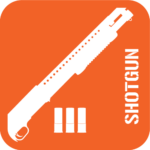Introduction: Gun safety is a top priority for responsible gun owners. As Richard Parker said in Spider-Man, “With great power comes great responsibility!” Let’s dive into different types of common gun safeties and weigh the pros and cons of having a safety on your firearm.

Common Types of Firearm Safeties:
Each firearm safety mechanism operates differently, generally by blocking the trigger mechanism or firing pin when engaged. Here’s a look at some of the most common types:
- Lever Safety (Thumb Safety):
- Description: A pivoting lever, usually found on pistols and some rifles, that flips to engage or disengage the safety.
- Pivot Safety:
- Description: Found on the frame, bolt, or slide, this pivoting lever is common on semi-automatic pistols and some rifles, allowing easy on/off control.
- Push Button Safety:
- Description: This straightforward button engages or disengages the safety with a press. It’s found on various firearms.
- Hammer Safety (Half-Cock):
- Description: This mechanism prevents the hammer from hitting the firing pin unless the trigger is properly pulled. It’s most common on single-action revolvers and other firearms with exposed hammers, though some argue it’s not a “true” safety.
- Slide Safety:
- Description: Integrated into the slide of some firearms, this sliding bar or button blocks the firing action. It’s commonly seen on rifles and shotguns.
- Cross-Bolt Safety:
- Description: This push-button safety, typically located near the trigger guard or hammer, prevents the trigger from engaging. It’s common on shotguns and semi-automatic rifles.
Pros of having Firearm Safeties:
- Prevention Against Accidental Discharge:
A safety mechanism can prevent accidental discharge if the trigger is unintentionally pressed or if the firearm is dropped. - Carrying with Confidence:
Some users, especially those new to handling firearms, feel more secure with a manual safety. - Deliberate Control:
A safety gives the shooter the ability to intentionally disable the firing mechanism when not ready to shoot.
Cons of having Firearm Safeties:
- Delayed Draw Time:
Disengaging the safety adds an extra step, which can delay firing in time-sensitive situations, such as self-defense. - Potential for User Error:
Improper training can lead to unintentional disengagement of the safety, increasing the chance of accidental discharge. - Mechanical Failures:
Like any mechanical component, safeties can fail, potentially leaving the firearm in a compromised state.
Important Considerations:
- Training is Essential:
Proper training is critical. A safety cannot replace the need for knowledge of how to shoot, carry, and handle a firearm responsibly. - Internal Safeties on Some Models:
Certain firearms have internal safeties that engage automatically when the trigger is not pressed. While these remove the need for a manual safety, they do not replace the need for safe handling. - Personal Preference Matters:
Choosing a firearm with or without a manual safety is a personal decision based on experience, comfort level, and intended use.
Conclusion:
Deciding whether to use a gun with a safety depends on individual preference, experience, and intended use. Understanding each safety mechanism, The Pro’s & Con’s of Firearm Safeties as well as practicing regularly are crucial steps for responsible firearm ownership. Remember, safety starts with the shooter!
Check Out Our Other Gun Blogs HERE:https://backwoodsports.com/category/guns/












